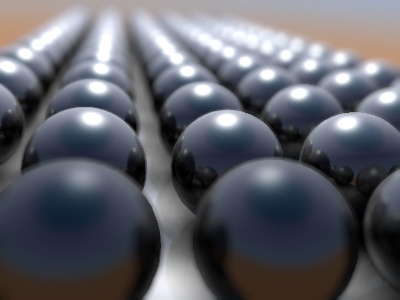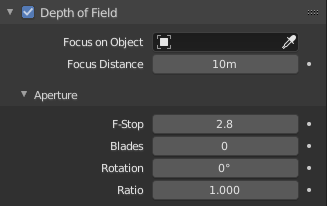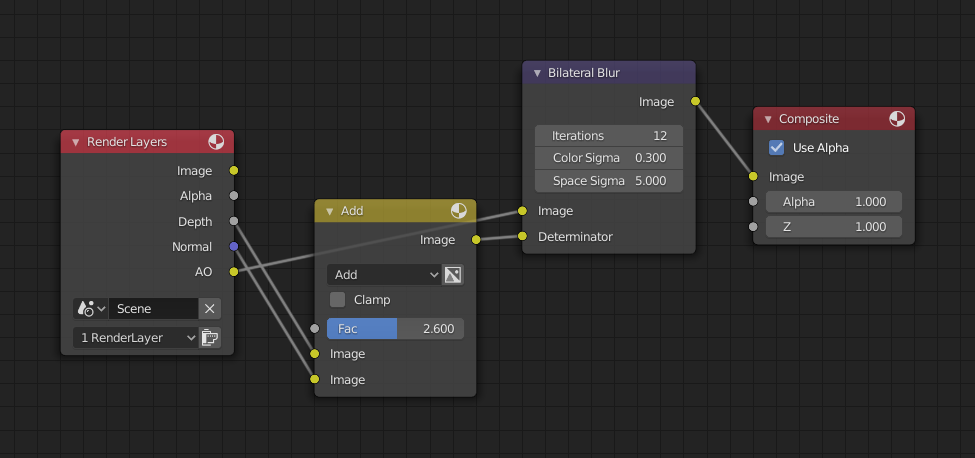- Blur NodeпѓЃ
- InputsпѓЃ
- PropertiesпѓЃ
- OutputsпѓЃ
- ExampleпѓЃ
- How to blur a texture node in cycles material?
- 6 Answers 6
- Defocus NodeпѓЃ
- InputsпѓЃ
- PropertiesпѓЃ
- OutputsпѓЃ
- ExamplesпѓЃ
- No Z-Buffer ExamplesпѓЃ
- Camera SettingsпѓЃ
- HintsпѓЃ
- Bilateral Blur NodeпѓЃ
- InputsпѓЃ
- PropertiesпѓЃ
- OutputsпѓЃ
- ExampleпѓЃ
- Bokeh Blur NodeпѓЃ
- InputsпѓЃ
- PropertiesпѓЃ
- OutputsпѓЃ
- ExamplesпѓЃ
Blur NodeпѓЃ
The Blur node blurs an image, providing several blur modes.
InputsпѓЃ
Standard color input.
The optional Size input will be multiplied with the X and Y blur radius values. It also accepts a value image, to control the blur radius with a mask. The values should be mapped between (0 to 1) for an optimal effect.
PropertiesпѓЃ
The difference between the types is in the way they handle sharp edges, smooth gradients and preserve the highs and the lows.
Simply blurs everything uniformly.
Preserves the high and the lows better by making a linear falloff.
Looks similar to Gaussian but can be a little faster but slightly worse looking.
Preserve the highs, but give an almost out-of-focus blur while smoothing sharp edges.
Gives the best looking results but tends to be the slowest.
An approximation of the Gaussian.
Catmull-Rom keeps sharp contrast edges crisp.
Preserve the highs, but give an almost out-of-focus blur while smoothing sharp edges.
Allows a variable blur radius, if the size input is an image.
The Bokeh button will force the Blur node to use a circular blur filter. This gives higher quality results, but is slower than using a normal filter.
The Gamma button applies a gamma correction on the image before blurring it.
Percentage Value of the blur radius relative to the image size.
Values set the ellipsoid radius in numbers of pixels over which to spread the blur effect.
Allows the image, that is being blurred, to extend past its original dimension.
OutputsпѓЃ
Standard color output.
ExampleпѓЃ
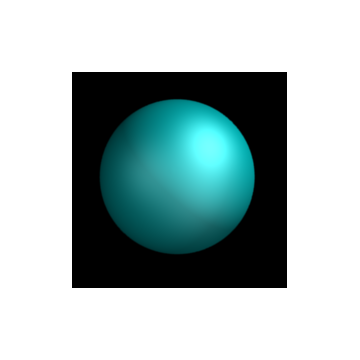 |
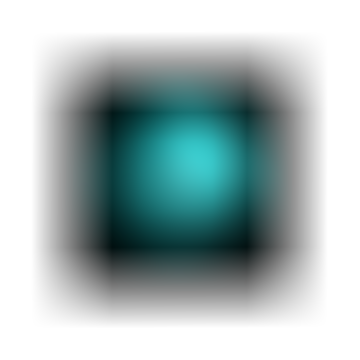
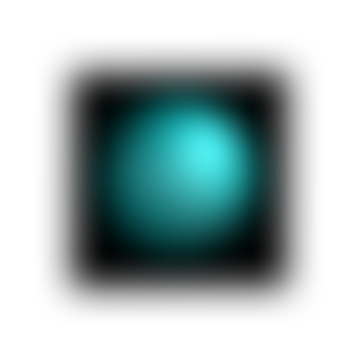
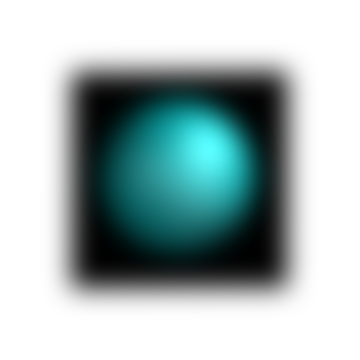
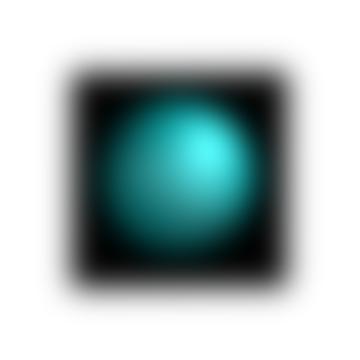
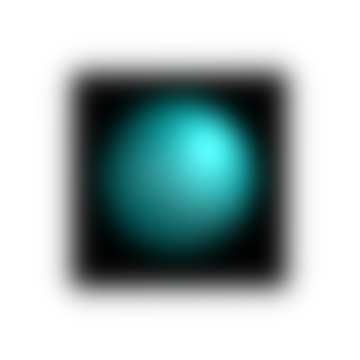
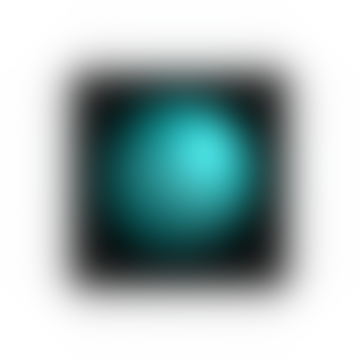

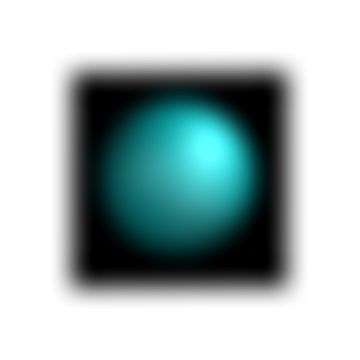
© Copyright : This page is licensed under a CC-BY-SA 4.0 Int. License. Last updated on 02/15/2023.
How to blur a texture node in cycles material?
For a Cycles material I need to blur a texture. If the texture where a Texture Image node, I can blur the image before adding it but in my case I need to blur a Voronoi Texture and so I can’t do it.
I have searched but I didn’t find a blur node. Can this be achieved?
6 Answers 6
I have found that b°wide NodePack contains a blur node! It’s called ImageBlur.
What it does is play with the vectors to blur it, something like if a ray comes it collide to multiple points (effectively blurring the texture). I don’t know exactly how, but here is a screen capture of the node expanded.
Note that in the background I have used it for testing in a ImageTexture node with a camera vector, that is processed by the ImageBlur and then passed to the ImageTexture vector input.
You can see all its nodes for your use (it is in public domain) from b°wide nodepack for blender and you can download it in blendswap. It have many usefull nodes.
To blur such a procedural texture, you can’t simply add a ‘blur’ node or similar. Instead, you need to manipulate the input Vector to distort the texture and then rely on the Render Samples to produce the blurring.
One easy way of achieving this is to add the nodes shown.
Use the relevant output of the Texture Coordinate node (Generated, Object, UV, etc) depending on how you want the texture (and blurring) to be applied. The ‘Subtract’ node is set to its default (mid-gray) with factor set to 1.000 — this is to adjust the Noise texture to ensure the blurring is even. The Noise texture is set to a very high scale and the Factor of the Add node can be adjusted to change the strength of the blur (0 = no blur, 1.0 is maximum blur).
As mentioned, you should set your Render Samples (on the Render properties) to a higher value so as to allow the rendering enough samples to produce a clean ‘blur’.
Examples showing no blurring and blurring :
Defocus NodeпѓЃ
The Defocus Node blurs areas of an image based on a map/mask input.
It is typically used to emulate depth of field ( DOF ) using a post-processing method with a Z-buffer input. But also allows to blur images that are not based on Z depth too.
InputsпѓЃ
Standard color input.
Z-buffer input, but could also be a (grayscale) image used as a mask, or a single value input.
PropertiesпѓЃ
The number of iris blades of the virtual camera’s diaphragm.
Disk (to emulate a perfect circle), Triangle (3 blades), Square (4 blades), Pentagon (5 blades), Hexagon (6 blades), Heptagon (7 blades) or Octagon (8 blades).
This slider is deactivated, if the Bokeh Type is set to Disk. It can be used to add a rotation offset to the Bokeh shape. The value is the angle in degrees.
Applies a gamma correction on the image before and after blurring it.
This option controls the amount of focal blur in the same way as a real camera. It simulates the aperture f of a real lens’ iris, without modifying the luminosity of the picture. The default value 128 is assumed to be infinity: everything is in perfect focus. Half the value will double the amount of blur. This slider is deactivated, if No Z-buffer is enabled.
This value limits the amount of blur by setting a maximum blur radius. Can be used to optimize the performance. The default value of 0 means no limit.
Some artifacts, like edge bleed, may occur, if the blur difference between pixels is large. This value controls how large that blur difference considered to be safe.
Only change this value, if there is an occurring problem with an in-focus object.
If enabled a limited amount of (quasi-)random samples are used to render the preview. This way of sampling introduces additional noise, which will not show up in the final render.
To select the linked scene.
Should be activated for a non Z-buffer in the Z input. No Z-buffer will be enabled automatically whenever a node that is not image based is connected to the Z input.
Only active when No Z-buffer is enabled. When No Z-buffer is used, the input is used directly to control the blur radius (similar to F-Stop when using the Z-buffer). This parameter can be used to scale the range of the Z input.
OutputsпѓЃ
Standard color output.
ExamplesпѓЃ
In this blend-file example, the ball array image is blurred as if it was taken by a camera with an f-stop of 2.8 resulting in a fairly narrow depth of field centered on 7.5 units from the camera. As the balls recede into the distance, they get blurrier.
No Z-Buffer ExamplesпѓЃ
Sometimes might want to have more control to blur the image. For instance, you may want to only blur one object while leaving everything else alone (or the other way around), or you want to blur the whole image uniformly all at once. The node, therefore, allows you to use something other than an actual Z-buffer as the Z input. For instance, you could connect an Image node and use a grayscale image where the color designates how much to blur the image at that point, where white is the maximum blur and black is no blur. Or, you could use a Time node to uniformly blur the image, where the time value controls the maximum blur for that frame. It may also be used to obtain a possibly slightly better DoF blur, by using a fake depth-shaded image instead of a Z-buffer. (A typical method to create the fake depth-shaded image is by using a linear blend texture for all objects in the scene or by using the “fog/mist” fake depth shading method.) This also has the advantage that the fake depth image can have Anti-Aliasing , which is not possible with a real Z-buffer.
The parameter No Z-buffer, becomes then the main blur control. The input has to be scaled, because usually the value of a texture is only in the numeric range 0.0 to 1.0.
Camera SettingsпѓЃ
Distance setting in the Camera Depth of Field panel. пѓЃ
The Defocus node uses the actual camera data in your scene if supplied by a Render Layer node.
To set the point of focus, the camera now has a Distance parameter, which is shorthand for Depth of Field Distance. Use this camera parameter to set the focal plane of the camera (objects Depth of Field Distance away from the camera are in focus). Set Distance in the main Camera edit panel; the button is right below the Depth of Field.
To make the focal point visible, enable the camera Limits option, the focal point is then visible as a yellow cross along the view direction of the camera.
HintsпѓЃ
In general, use preview mode, change parameters to your liking, only then disable preview mode for the final render.
For minimum artifacts, try to setup your scene such that differences in distances between two objects that may visibly overlap at some point are not too large.
Keep in mind that this is not real DoF, only a post-processing simulation. Some things cannot be done which would be no problem for real DoF at all. A typical example is a scene with some object very close to the camera, and the camera focusing on some point far behind it. In the real world, using shallow depth of field, it is not impossible for nearby objects to become completely invisible, in effect allowing the camera to see behind them. Hollywood cinematographers use this visual characteristic to achieve the popular “focus pull” effect, where the focus shifts from a nearby to a distant object, such that the “other” object all but disappears. Well, this is simply not possible to do with the current post-processing method in a single pass. If you really want to achieve this effect, quite satisfactorily, here is how:
Split up your scene into “nearby” and “far” objects, and render them in two passes.
Now, combine the two results, each with their own “defocus” nodes driven by the same Time node, but with one of them inverted (e.g. using a Map Value node with a Size of -1). As the defocus of one increases, the defocus on the other decreases at the same rate, creating a smooth transition.
Aliasing at Low f-Stop Values
At very low values, less than 5, the node will start to remove any oversampling and bring the objects at DoF Distance very sharply into focus. If the object is against a contrasting background, this may lead to visible stair-stepping (aliasing) which OSA is designed to avoid. If you run into this problem:
Do your own OSA by rendering at twice the intended size and then scaling down, so that adjacent pixels are blurred together.
Use the Blur node with a setting of 2 for X and Y.
Set DoF Distance off by a little, so that the object in focus is blurred by the tiniest bit.
Use a higher f-stop, which will start the blur, and then use the Z socket to a Map Value to a Blur node to enhance the blur effect.
Rearrange the objects in your scene to use a lower-contrast background.
A final word of warning, since there is no way to detect if an actual Z-buffer is connected to the node, be very careful with the No Z-buffer switch. If the Z scale value happens to be large, and you forget to set it back to some low value, the values may suddenly be interpreted as huge blur radius values that will cause processing times to explode.
© Copyright : This page is licensed under a CC-BY-SA 4.0 Int. License. Last updated on 02/15/2023.
Bilateral Blur NodeпѓЃ
The Bilateral Blur node performs a high-quality adaptive blur on the source image, allowing to blur images while retaining their sharp edges.
It can be used for various purposes like: smoothing noisy render passes to avoid longer computation times in example ray-traced ambient occlusion, blurry refractions/reflections, soft shadows, or to make non-photorealistic compositing effects.
InputsпѓЃ
Standard color input. If only the image input is connected, the node blurs the image depending on the edges present in the source image.
Which is non-obligatory and if the Determinator is connected, it serves as the source for defining edges/borders for the blur in the image. This has great advantage in case the source image is too noisy, but normals in combination with Z-buffer can still define exact borders/edges of objects.
PropertiesпѓЃ
Defines how many times the filter should perform the operation on the image. It practically defines the radius of blur.
Defines the threshold for which color differences in the image should be taken as edges.
A fine-tuning variable for blur radius.
OutputsпѓЃ
Standard color output.
ExampleпѓЃ
Bilateral smoothed Ambient Occlusion. blend-file example пѓЃ
© Copyright : This page is licensed under a CC-BY-SA 4.0 Int. License. Last updated on 02/15/2023.
Bokeh Blur NodeпѓЃ
The Bokeh Blur node generates a bokeh type blur similar to Defocus. Unlike defocus an in-focus region is defined in the Compositor. There is also more flexibility in the type of blur applied through the Bokeh Image node.
Several performance optimizations are also available such as OpenCL support, calculation area restriction and masking.
InputsпѓЃ
Standard color input.
This is an input for the Bokeh Image node.
Size controls the amount of blur. Size can either be a single value across the entire image or a variable value controlled by an input image. In order to use the latter, the Variable Size option must be selected. See the examples section below for more on how to use this.
This can be used with a Box Mask matte node or with a Mask input node to restrict the area of the image the blur is applied to. This could be helpful, for example, when developing a node system by allowing only a small area of the image to be filtered thus saving composite time each time adjustments are made.
PropertiesпѓЃ
Allows a variable blur radius, if the Size input is an image.
Max Blur is intended to act as an optimization tool by limiting the number of pixels across which the blur is calculated.
OutputsпѓЃ
Standard color output.
ExamplesпѓЃ
Three examples of how the size input may be used follow.
An ID masked alpha image can be used so that a background is blurred while foreground objects remain in focus. To prevent strange edges the Dilate Node should be used.
The Z pass can be visualized using a Map Value node and a Color Ramp node as described in Render Layers . A multiply Math node can be used following the color ramp so that a blur value greater than one is used for objects outside the focal range.
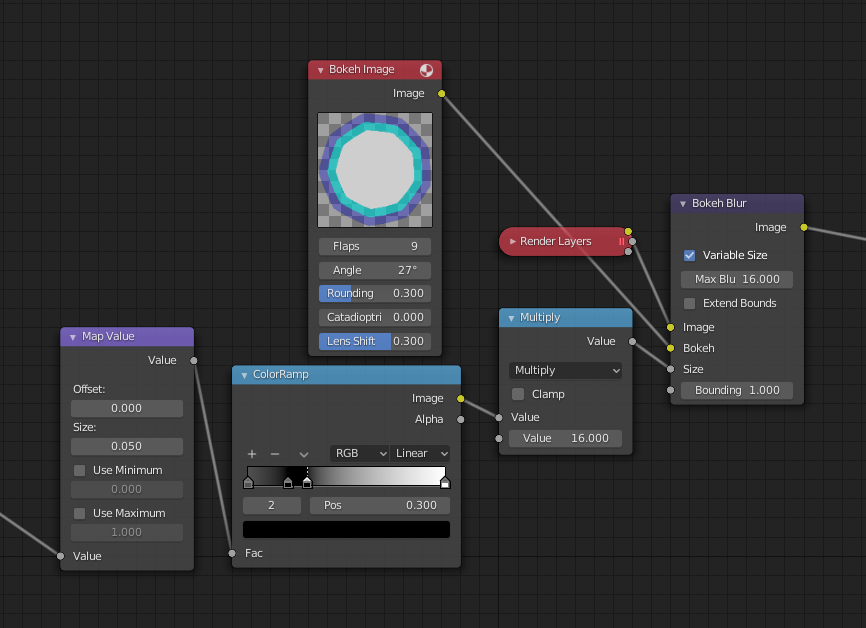
A manually created grayscale image can be used to define the sharp and blurry areas of a pre-existing image. Again, a Multiply Node can be used so that a blur value greater than one is used.
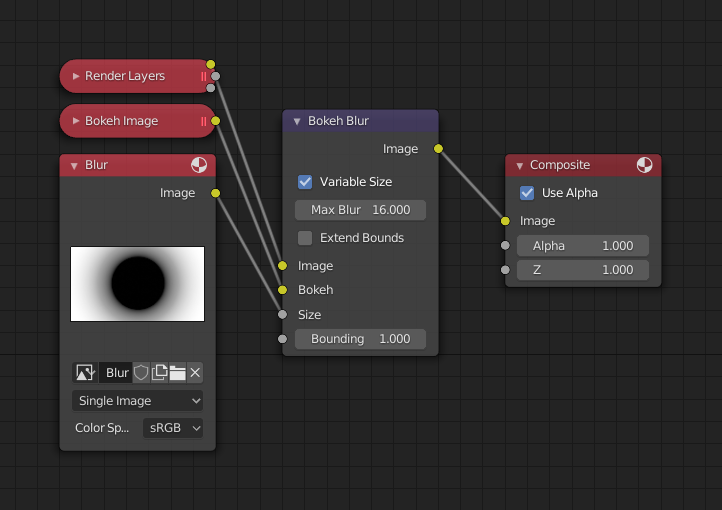
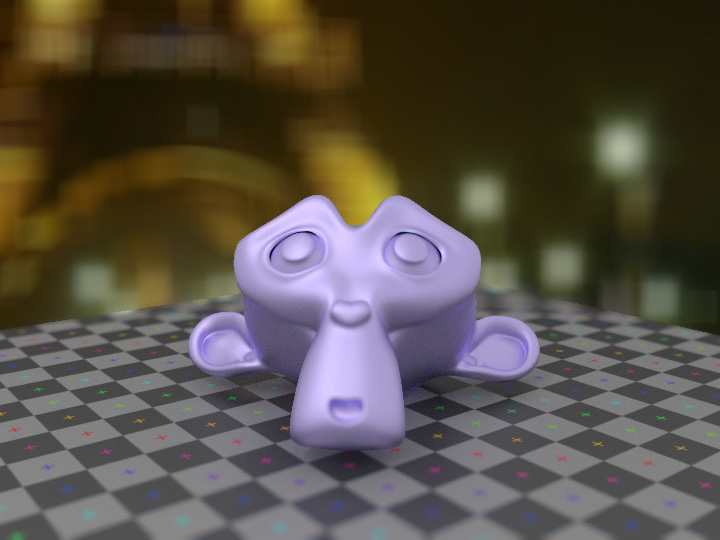 | 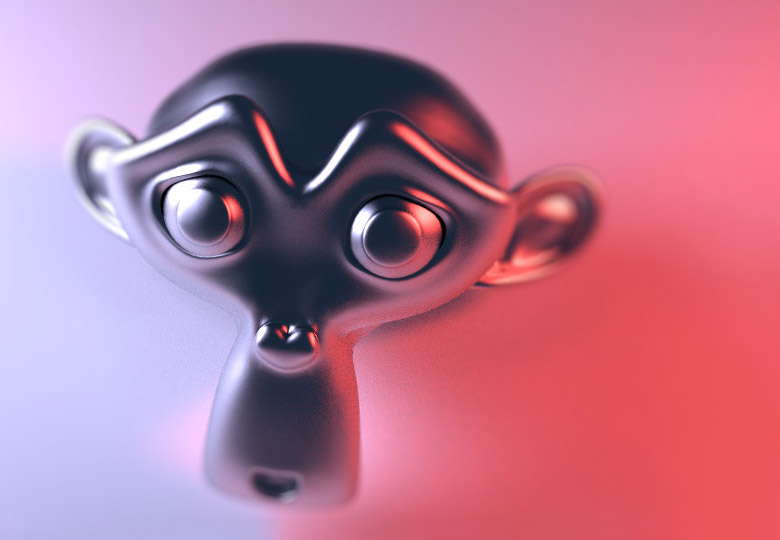 © Copyright : This page is licensed under a CC-BY-SA 4.0 Int. License. Last updated on 02/15/2023. Adblockdetector |





